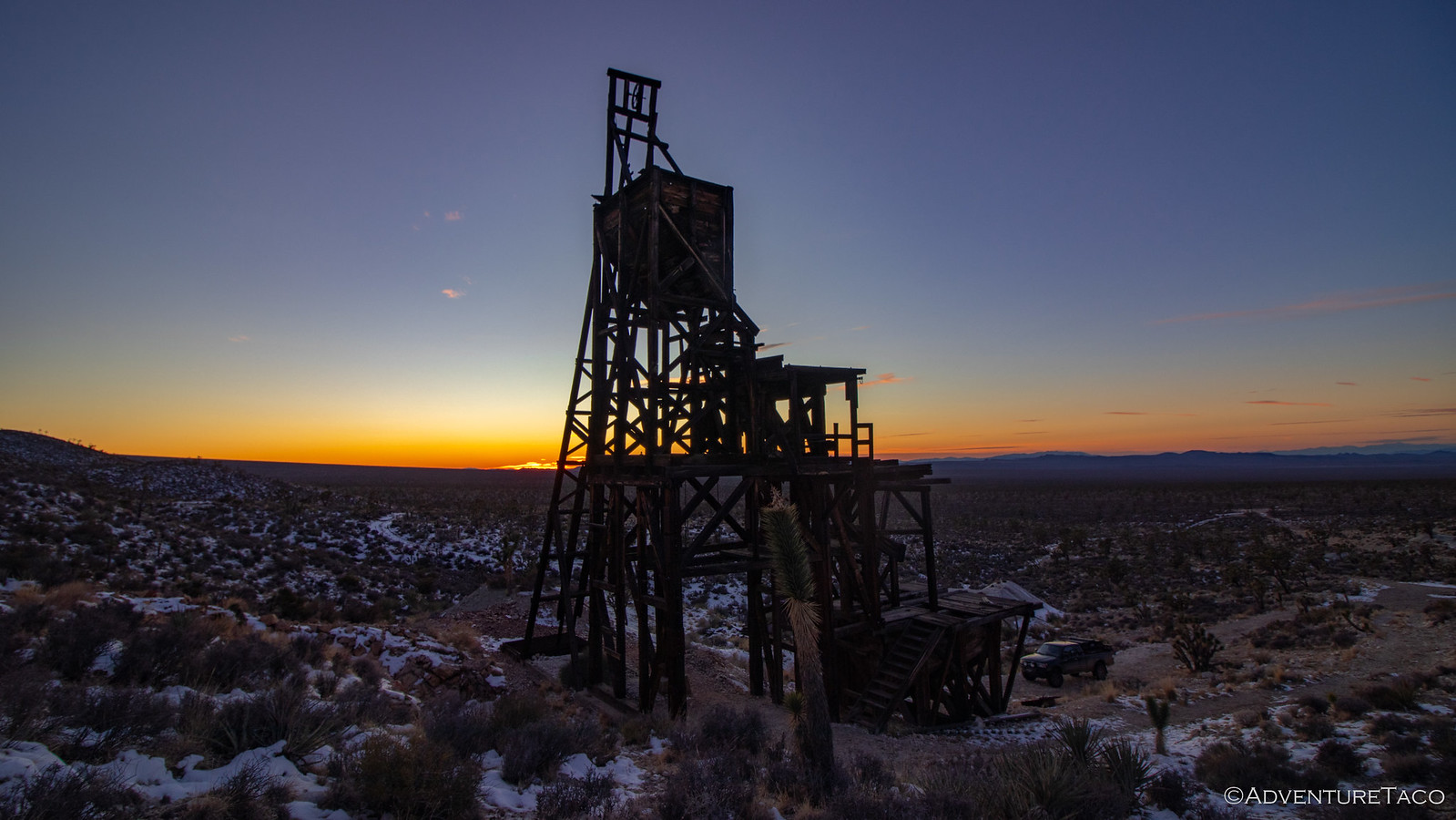This is an excerpt I found posted on the wall of the J. Riley Bembry Cabin in November 2023 while exploring the East Mojave Heritage Trail. There was surely more to this document, but it was not posted to the wall. Directions and locations have been redacted, per this request posted at the cabin itself.

Good practice, regardless of an official request.
SME Spring 2014 Field Trip Guide
San Bernadino & Inyo Counties, CA
April 26, 2014, Updated August 2020
Society of Mining Engineers
Southern California Mining Section
Written by Stephen P Mulqueen
Meeting Location
Meet at the gas station at Cima Road, located immediately south of Interstate 15 (between Halloran Summit and Mountain Pass) in the East Mojave Desert. After assembling the field trip caravan, we will head south several miles on Cima Road to explore sites of historic interest on the western slope of the Ivanpah Mountains. We will then proceed back to Cima Road and head north, cross over Interstate 15 and continue north on Kingston Road and Excelsior Mine Road towards the Kingston Range.
Evening Star Mine
The Evening Star is an abandoned mine located seven miles southeast of the present-day Interstate 15 along Cima Road and three miles east of the road on the western slope of the Ivanpah Mountains. The Evening Star, within the Ivanpah Mining District, began as a copper prospect discovered and claimed by J. Riley Bembry (1899-1984) during the early 1930s.
In 1935, shortly after its discovery, Bembry sold the property to Trigg Button and Clarence Hammett of Santa Ana, CA who began developing shaft No. 1. By 1941, the Tin Corporation of America leased the property from a new owner named Vaughn Maynard. In 1943 the mine was leased to Carl F. Wendrick, Jr. Wendrick employed eight me, built an upgraded wooden headframe at the mine and also constructed a new mill and smelter on the old smelter site at Valley Wells. During the first half of the 1940s, most of the steel production was dedicated to the War effort. The headframe was constructed of wood due to the shortage of steel.
Riley's Camp
This desert outpost is located ( - - - location redacted - - - ). Riley's Camp is named after J. Riley Bembry (1899-1984). He and many other gold miners lived in this remote community in the early 1900s. Bembry had numerous mining claims in this region.
Bembry was a veteran of World War I. Numerous veterans moved to the East Mojave after the First World War as a way to recover from their physical and psychological injuries sustained during their deployment. For those veterans who suffered from lung injuries associated with mustard gas, the arid desert climate was beneficial to their recovery. Some veterans became prospectors, miners, and ranchers, living their remaining years at desolate localities throughout the Mojave Desert. Several VFW posts (Veterans of Foreign Wars) were formed in the late teens and early '20s in this region of the California Desert.
In 1934 Bembry, with members of the VFW Death Valley Post 2884, erected a veterans' memorial on Sunrise Rock in the East Mojave, dedicated to those who had died during "The World War." The memorial consisted of a large white cross that was known as "Sunrise Cross," located 7 miles south of Rile's Camp.
Bembry assumed duties as caretaker of the memorial. In 1983 and again after his death in 1984, vandals destroyed and removed the cross. In a court case heard in 2007, the U.S. 9th Circuit Court of Appeals, it was determined that transferring the ownership of the land that held the cross would "do nothing to minimize the impermissible government endorsement" in reference to the "Separation of Church and State." In the 2010 Supreme Court case of Salazar v. Buono, it was determined that a cross, to replace the original cross, was a religious symbol and could not be erected on public land.
The battle to reinstate the cross on Sunrise Rock was not over. During April of 2012, the U.S. District Cour ofor the Central District of California approved a land exchange to remove Sunrise Rock from Federal ownership in the Mojave National Preserve. On Veterans Day, November 11, 2012, a cross to replace the original memorial was dedicated in a ceremony attended by over 100 people. The symbol has also been designated The Cross, The Mojave Cross, and The Mojave Memorial Cross, dedicated "to honor all military dead of all wars."

J. Riley Bembry Cabin.
Related Stories



